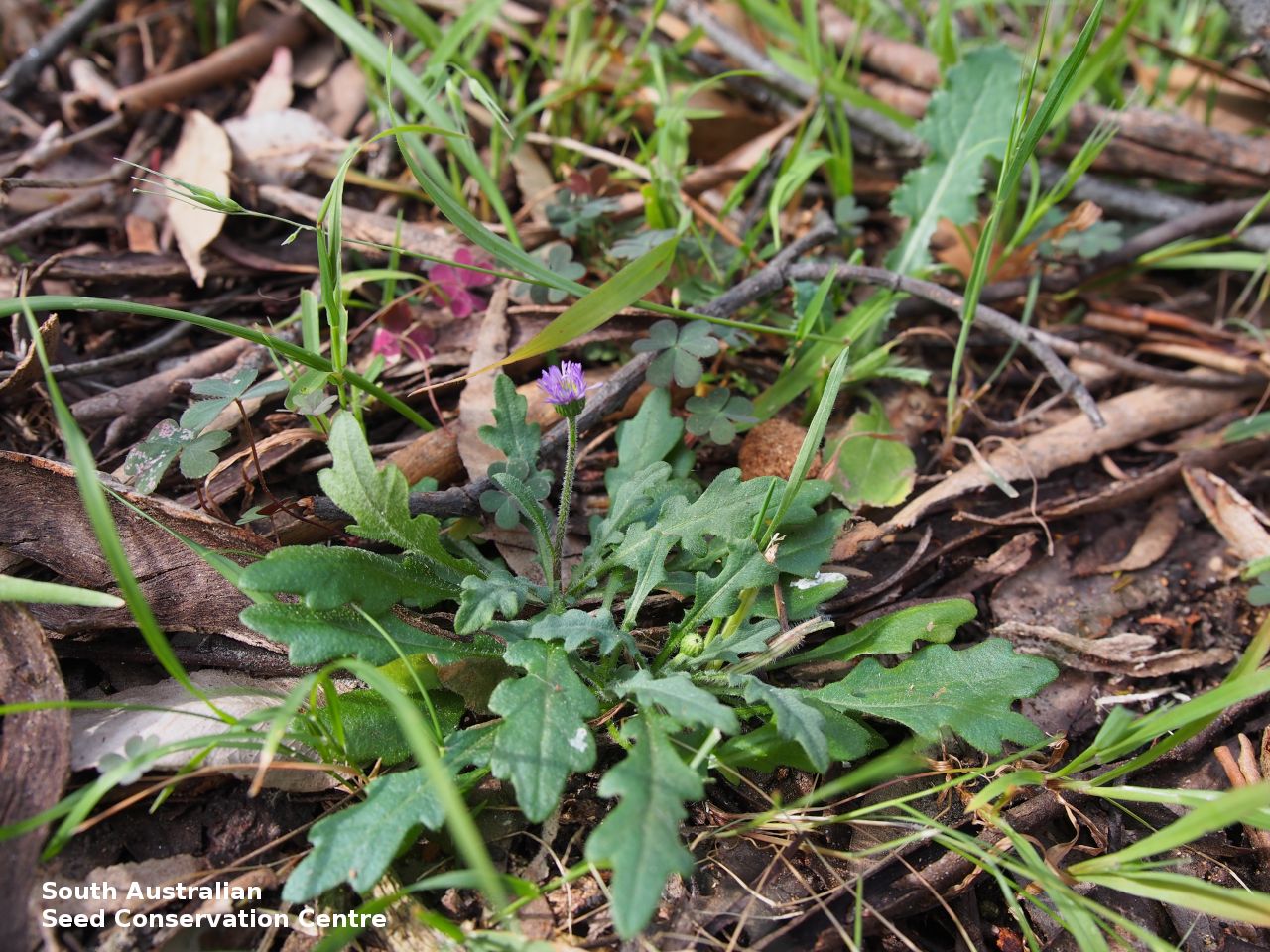
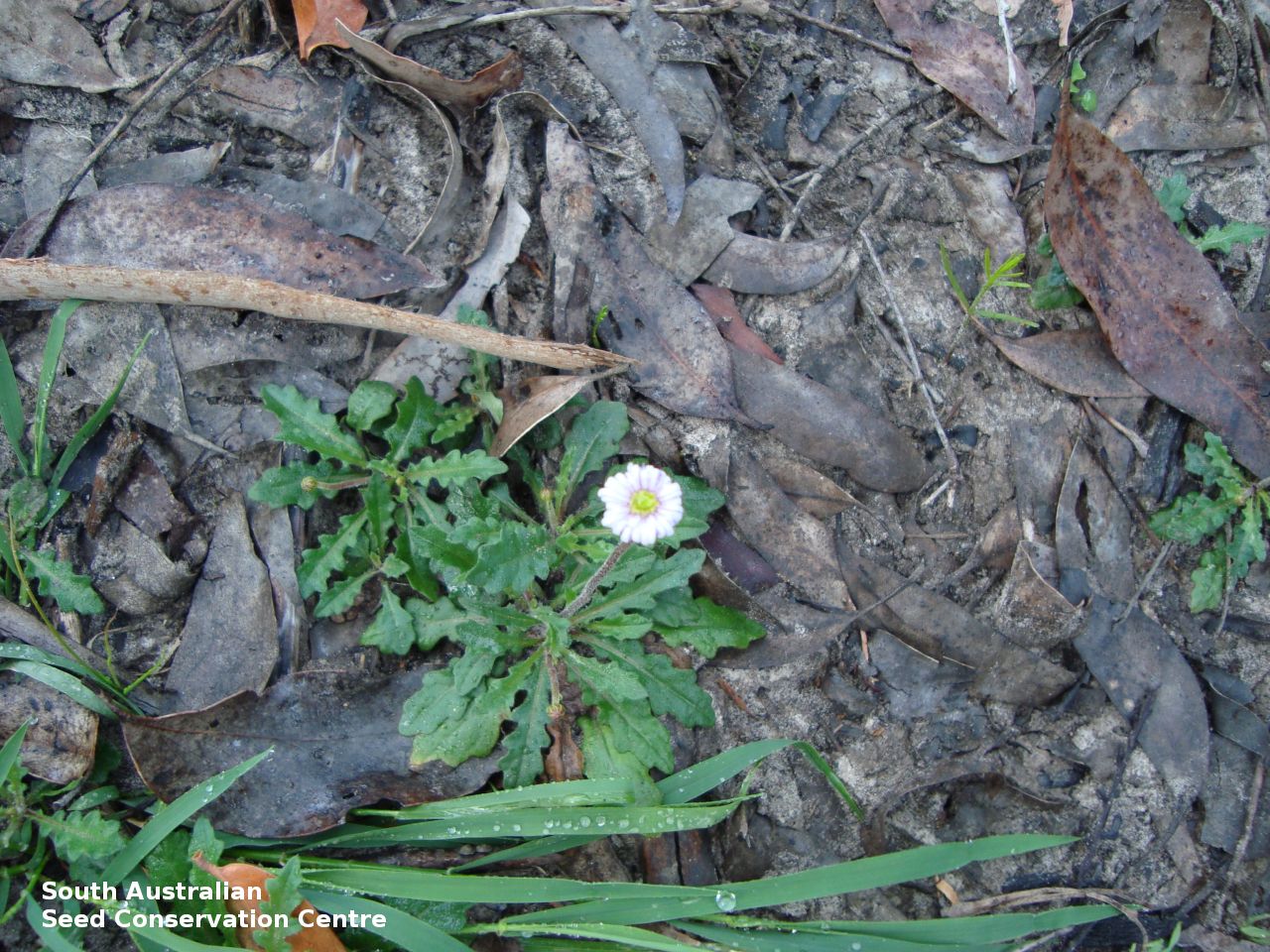
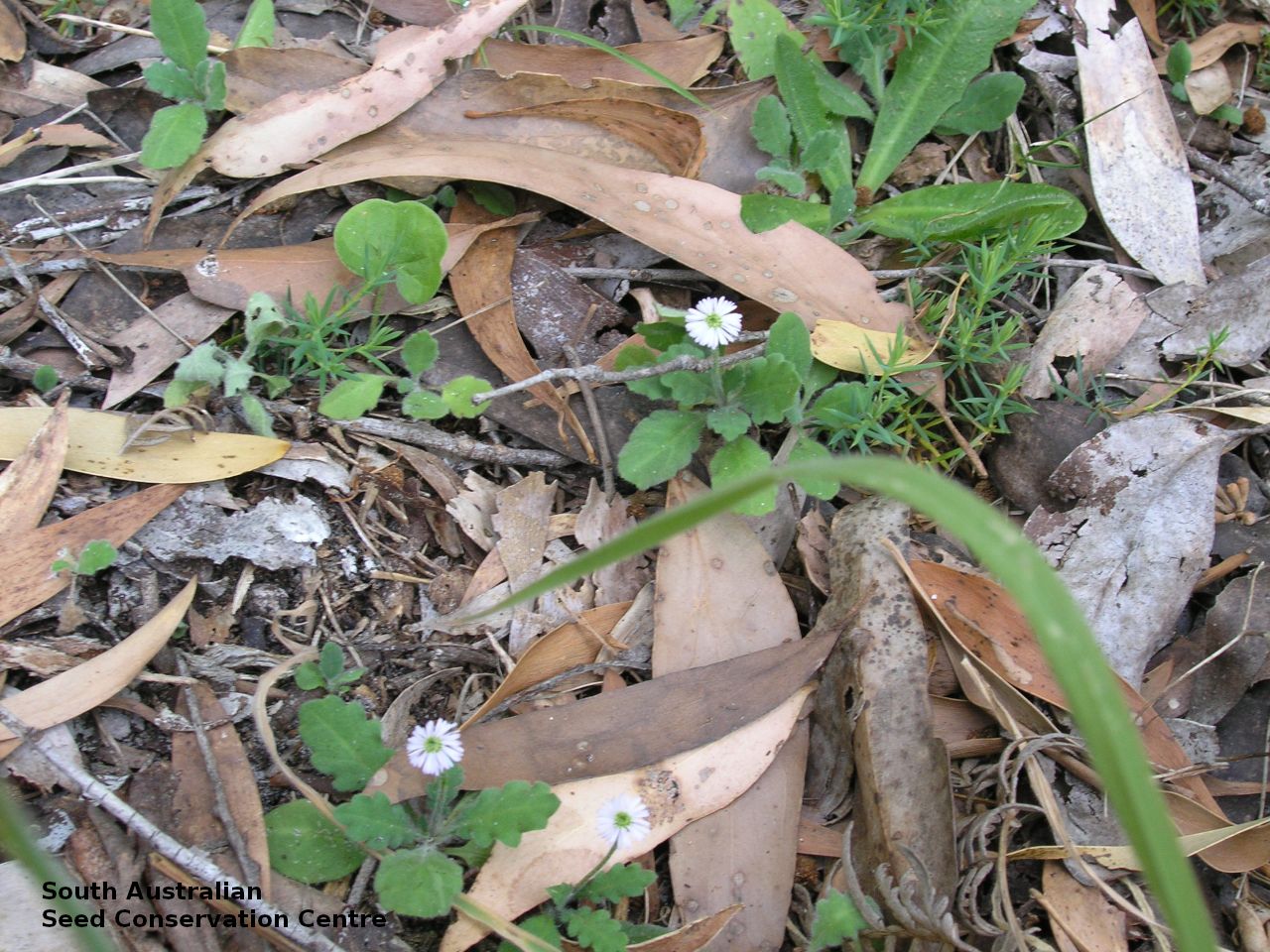
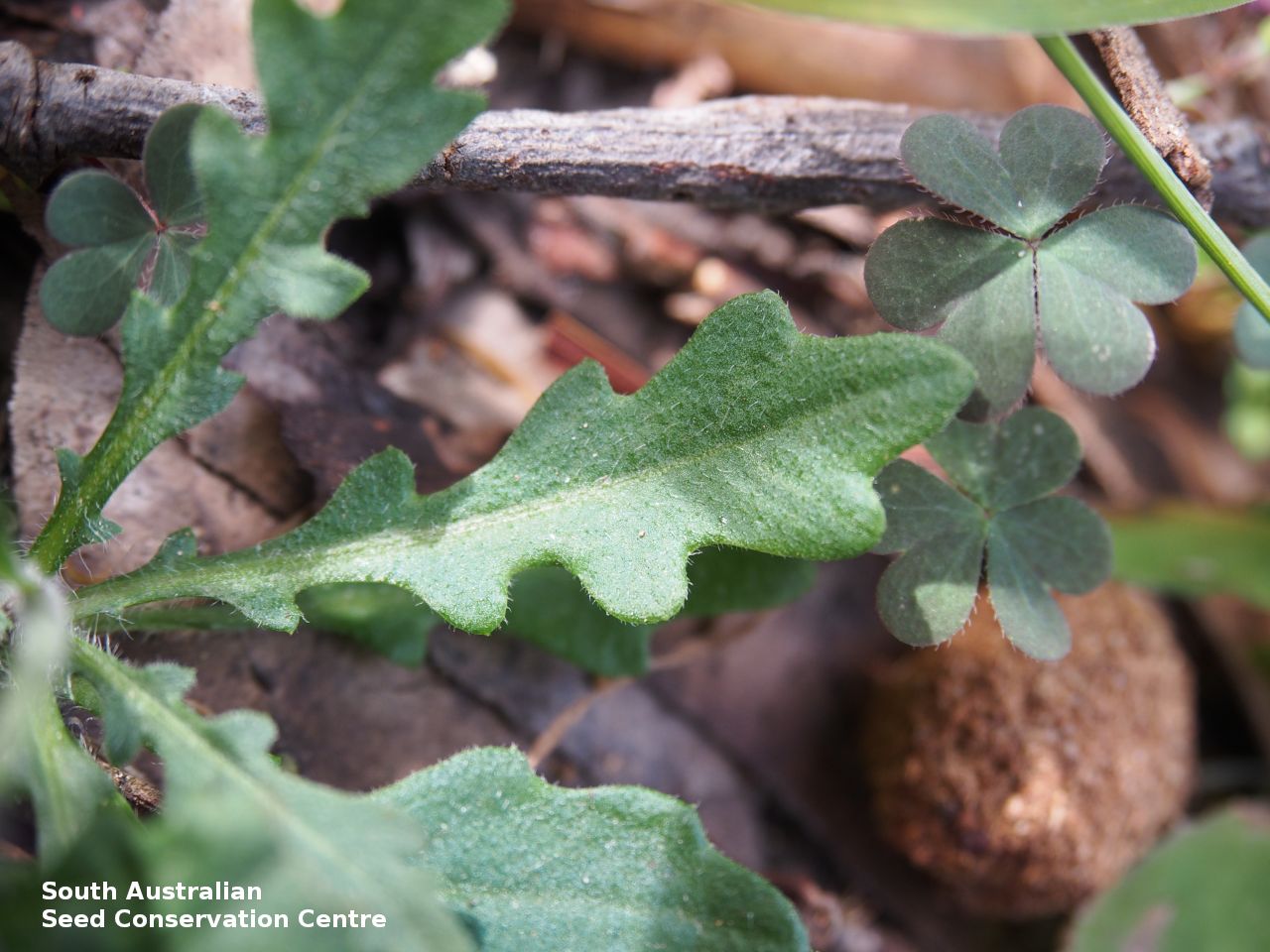
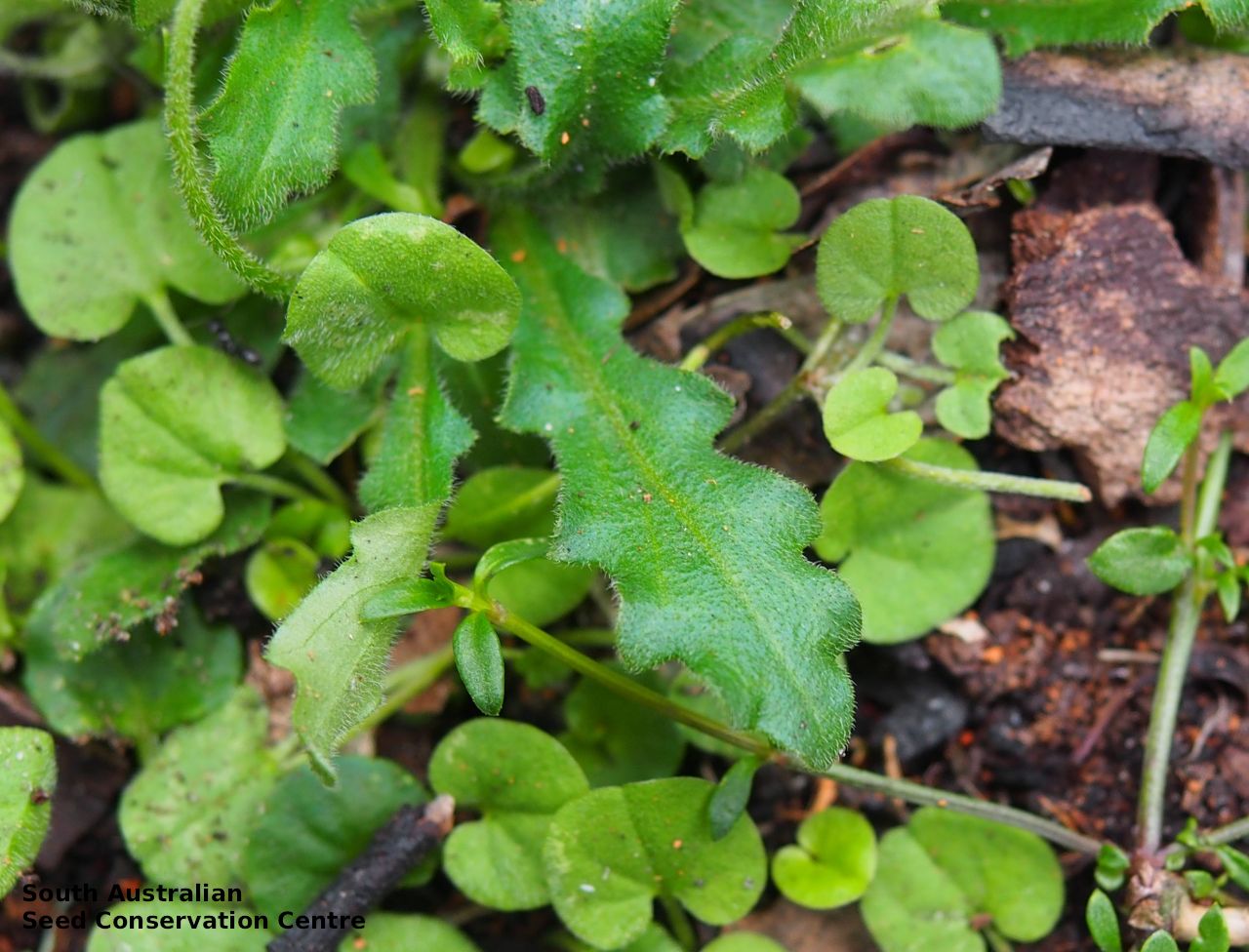
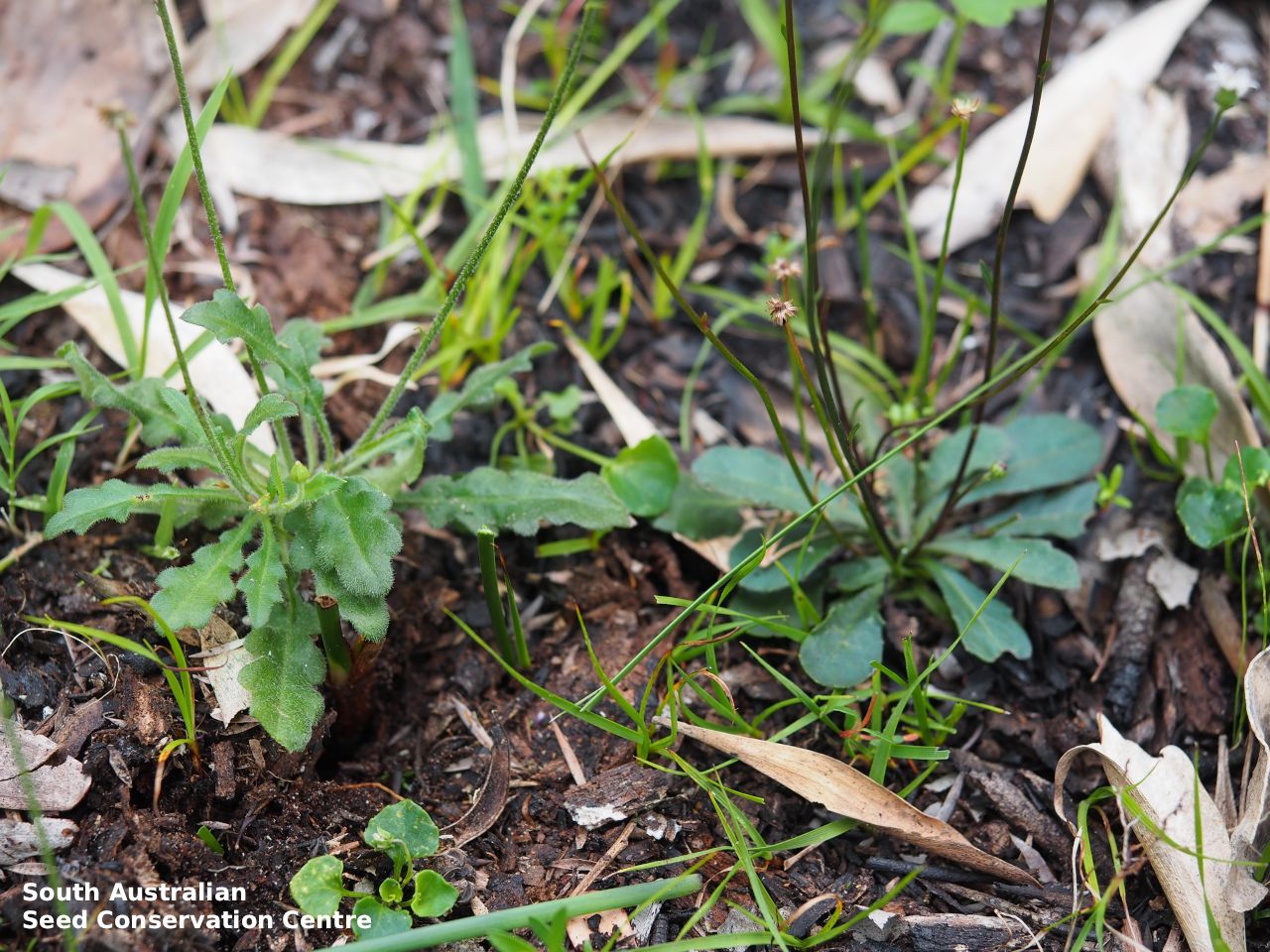
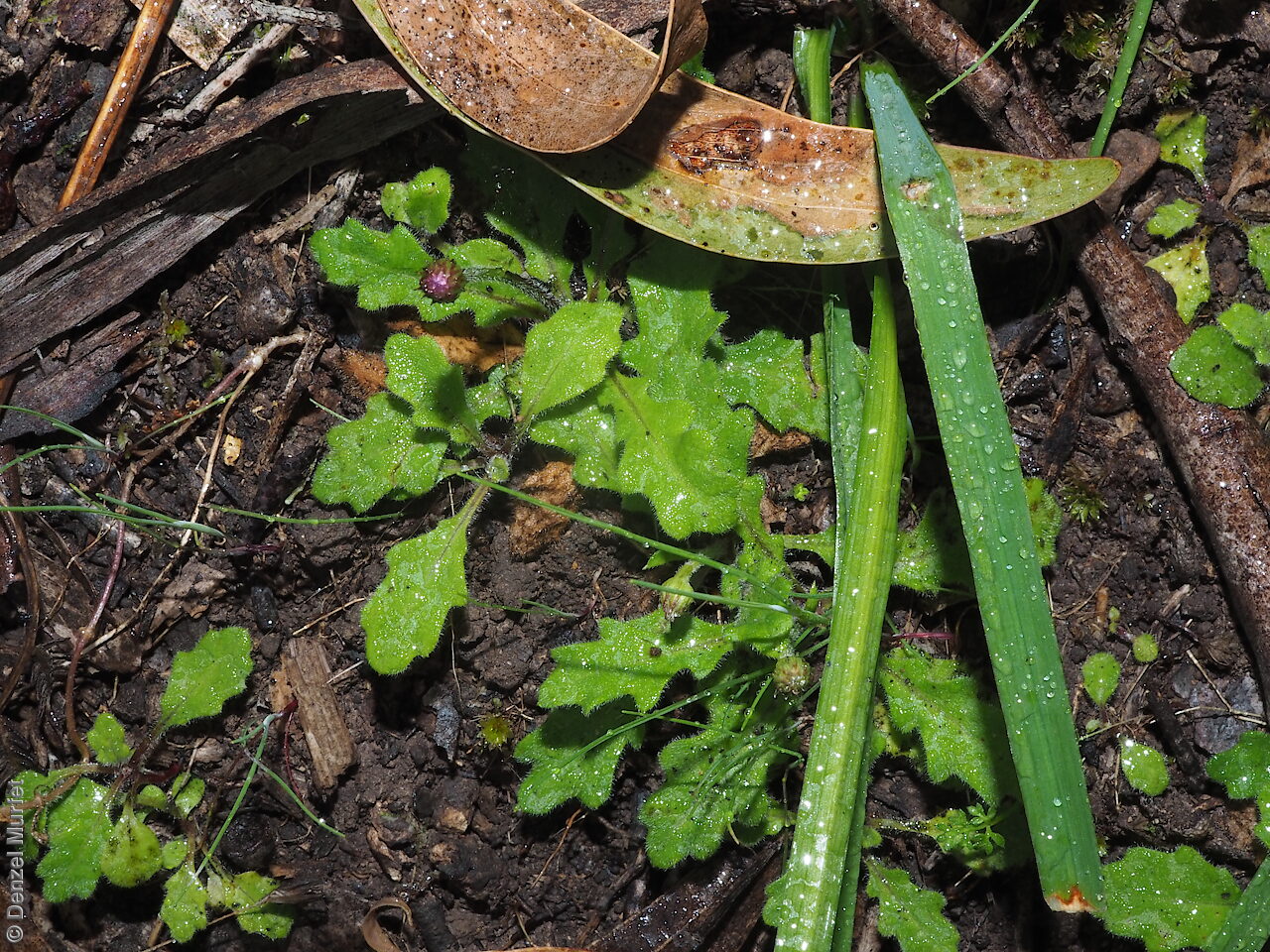
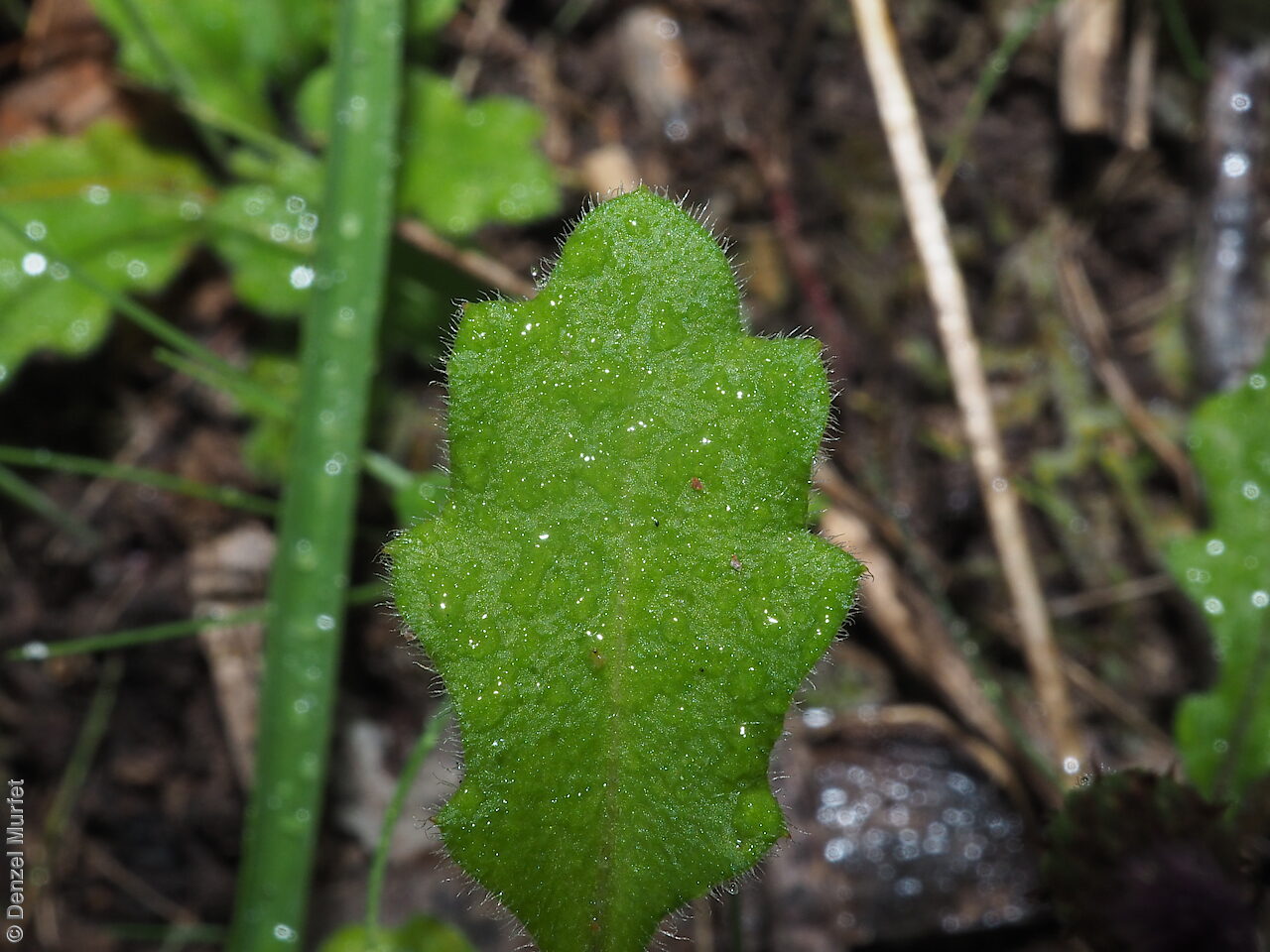
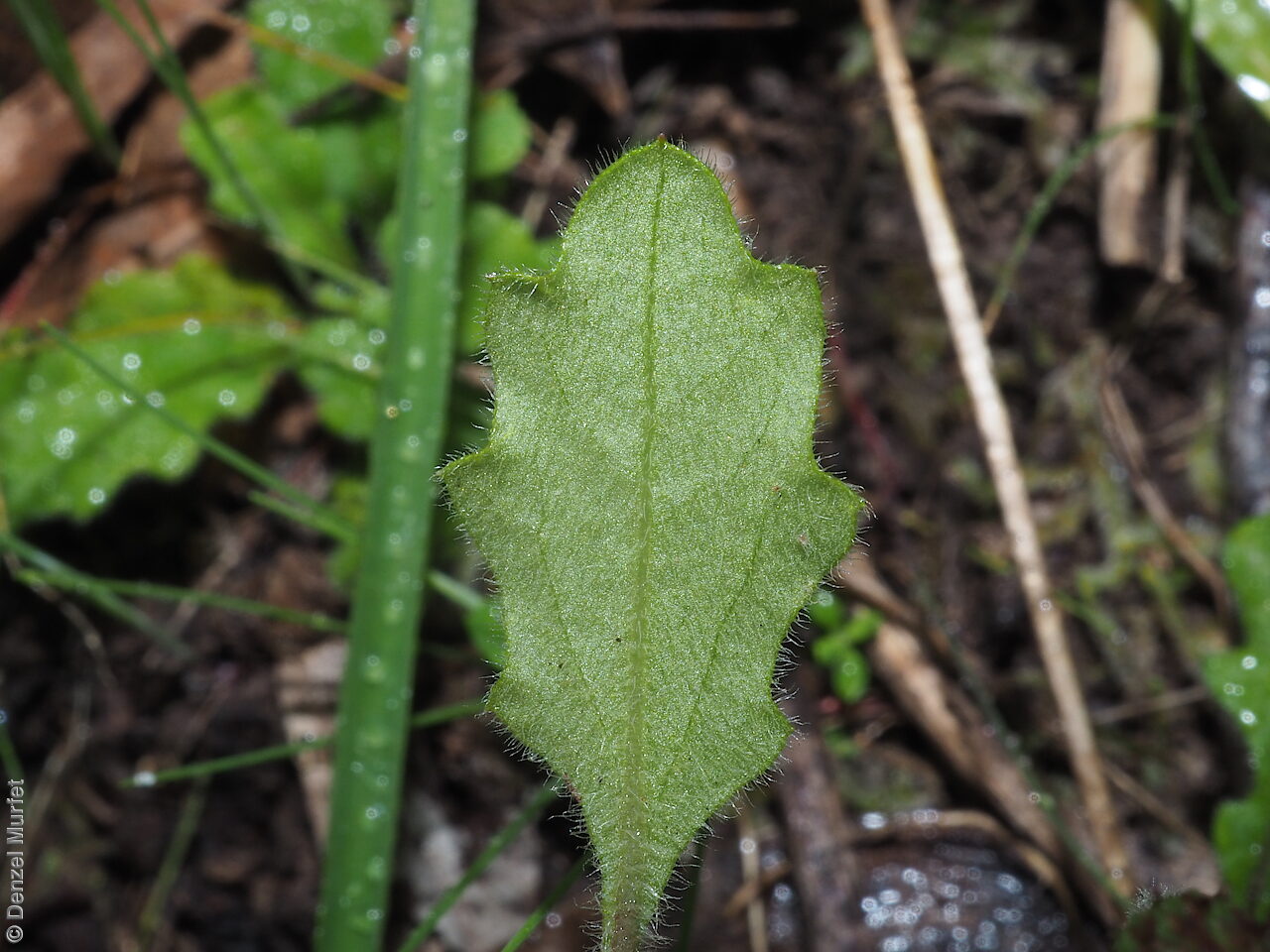
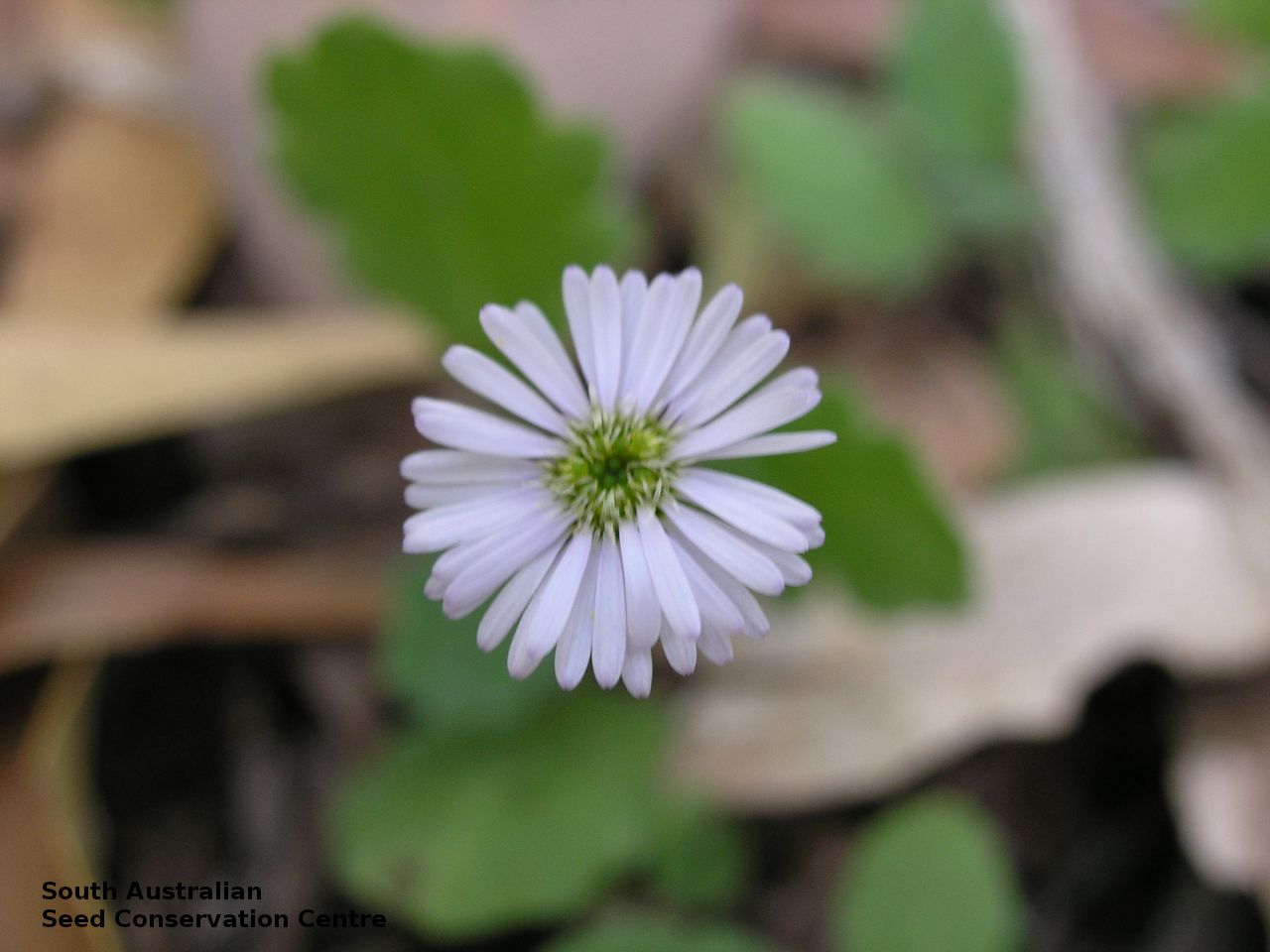
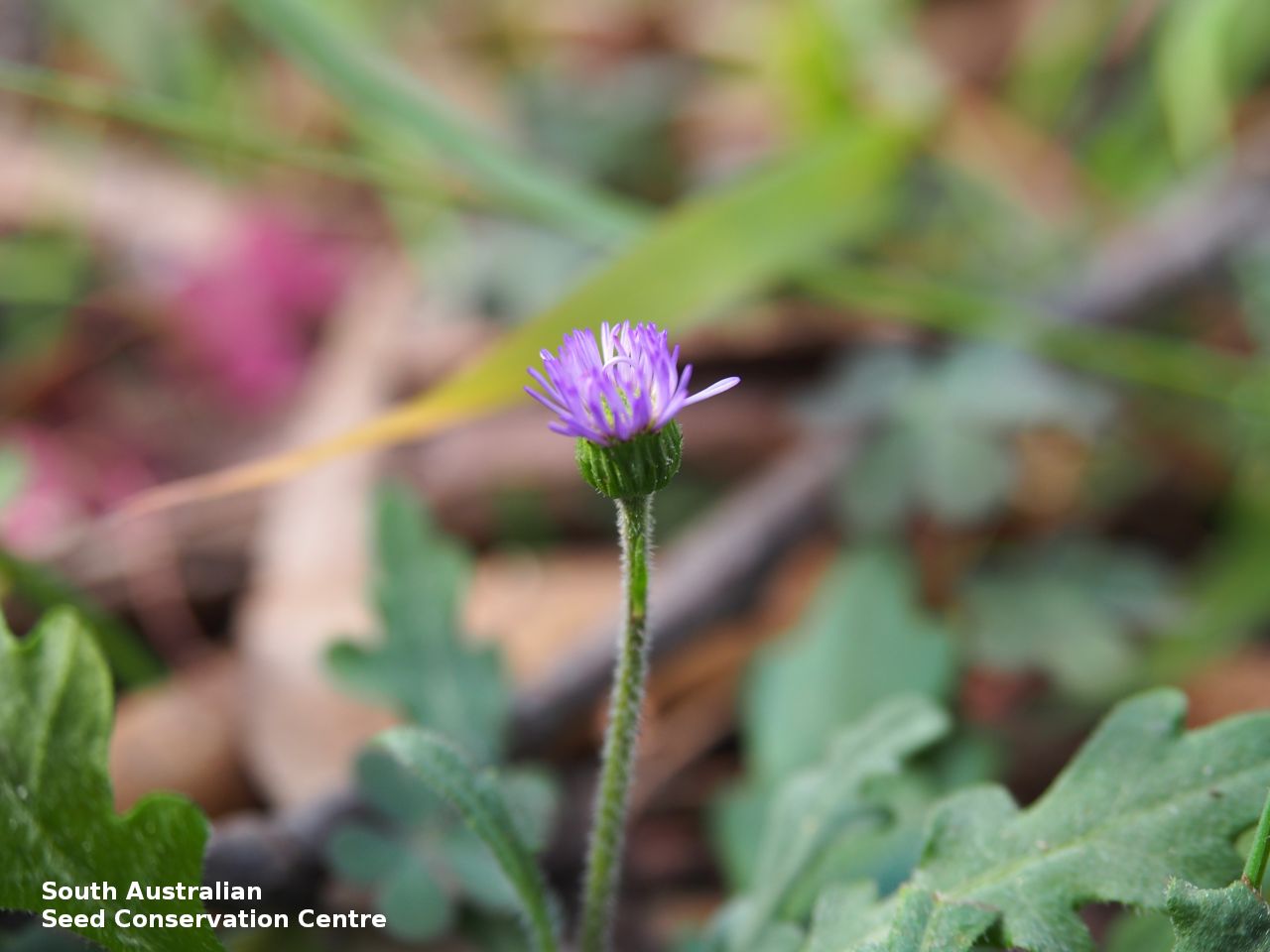
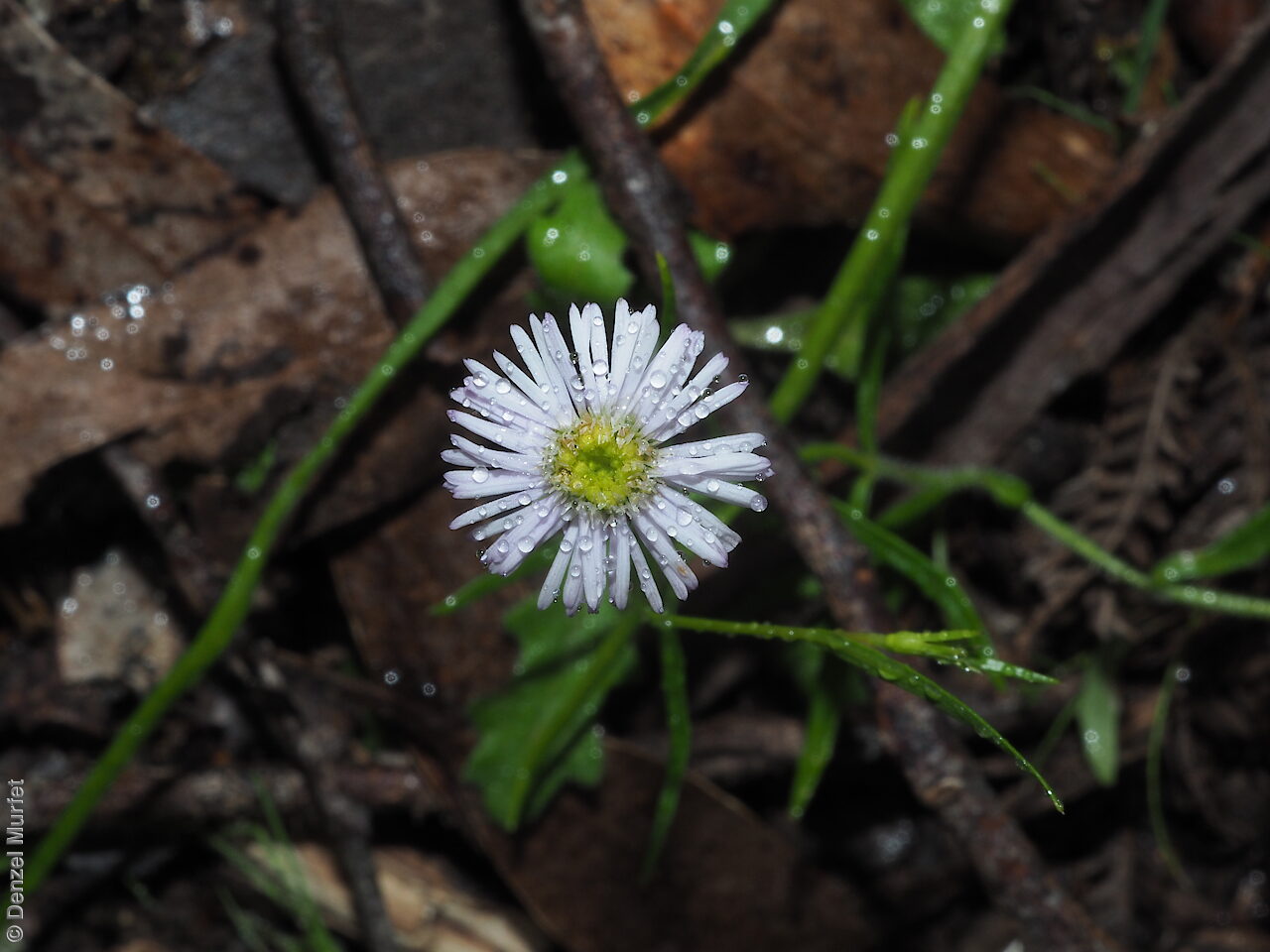
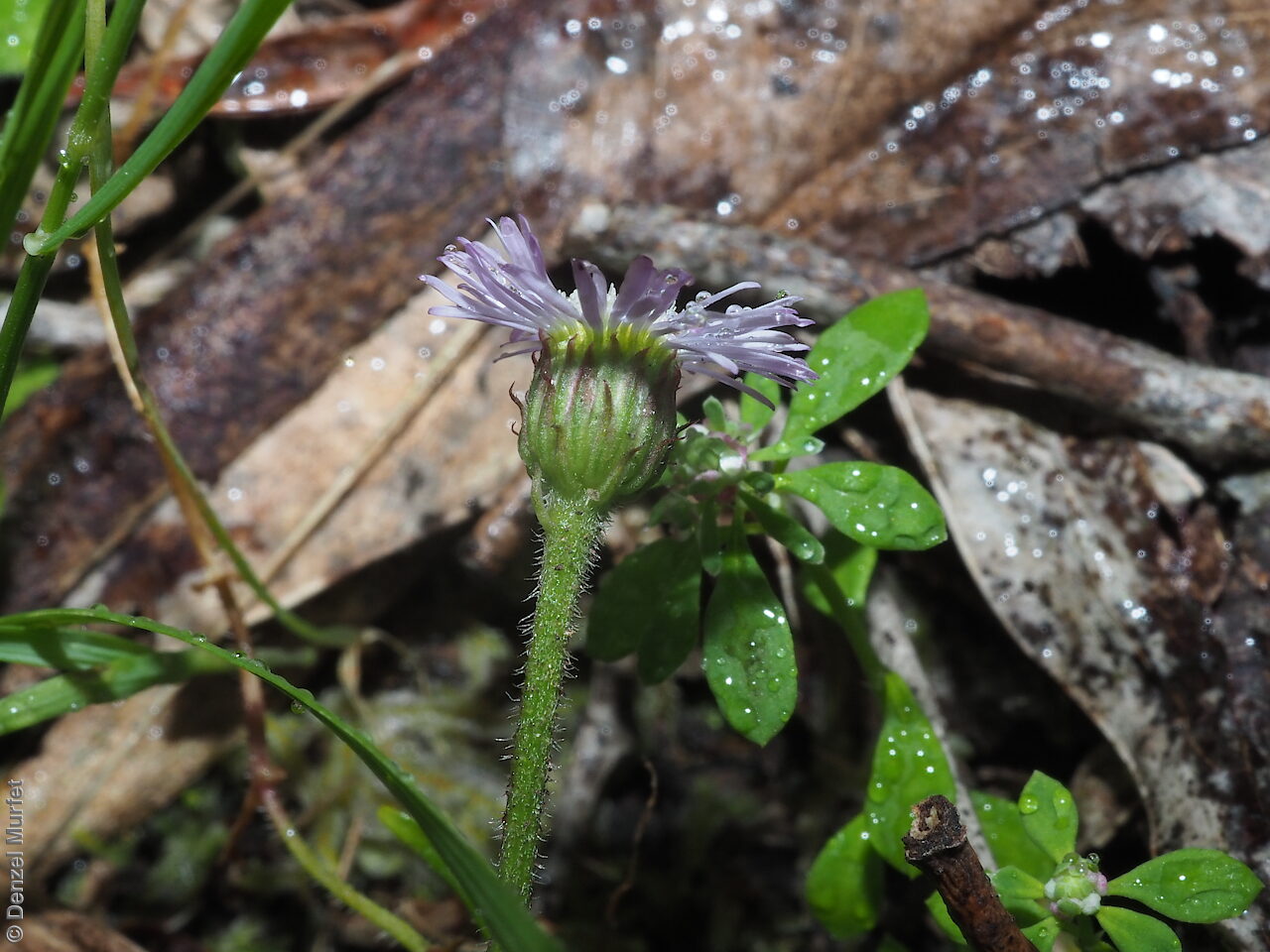
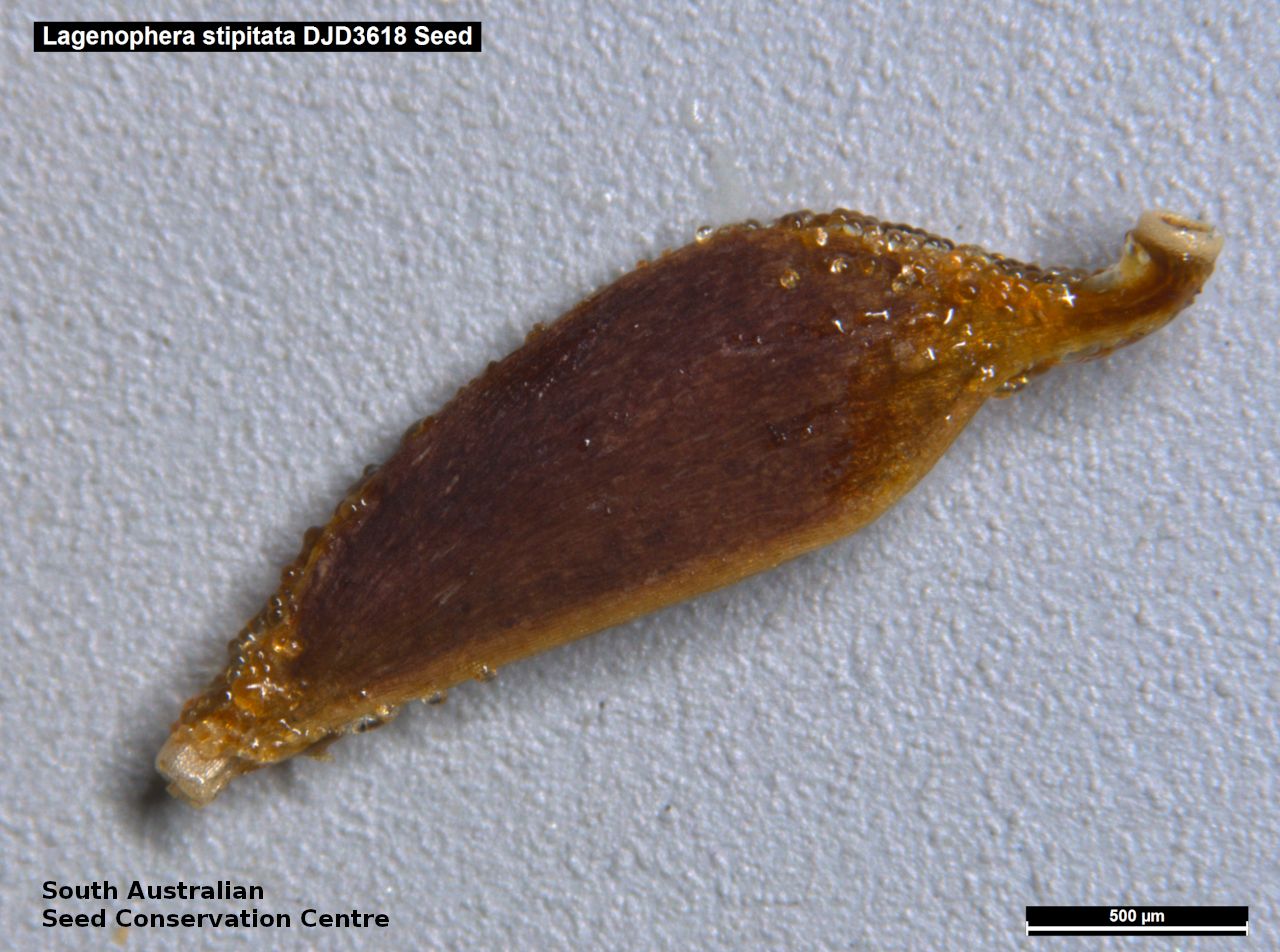

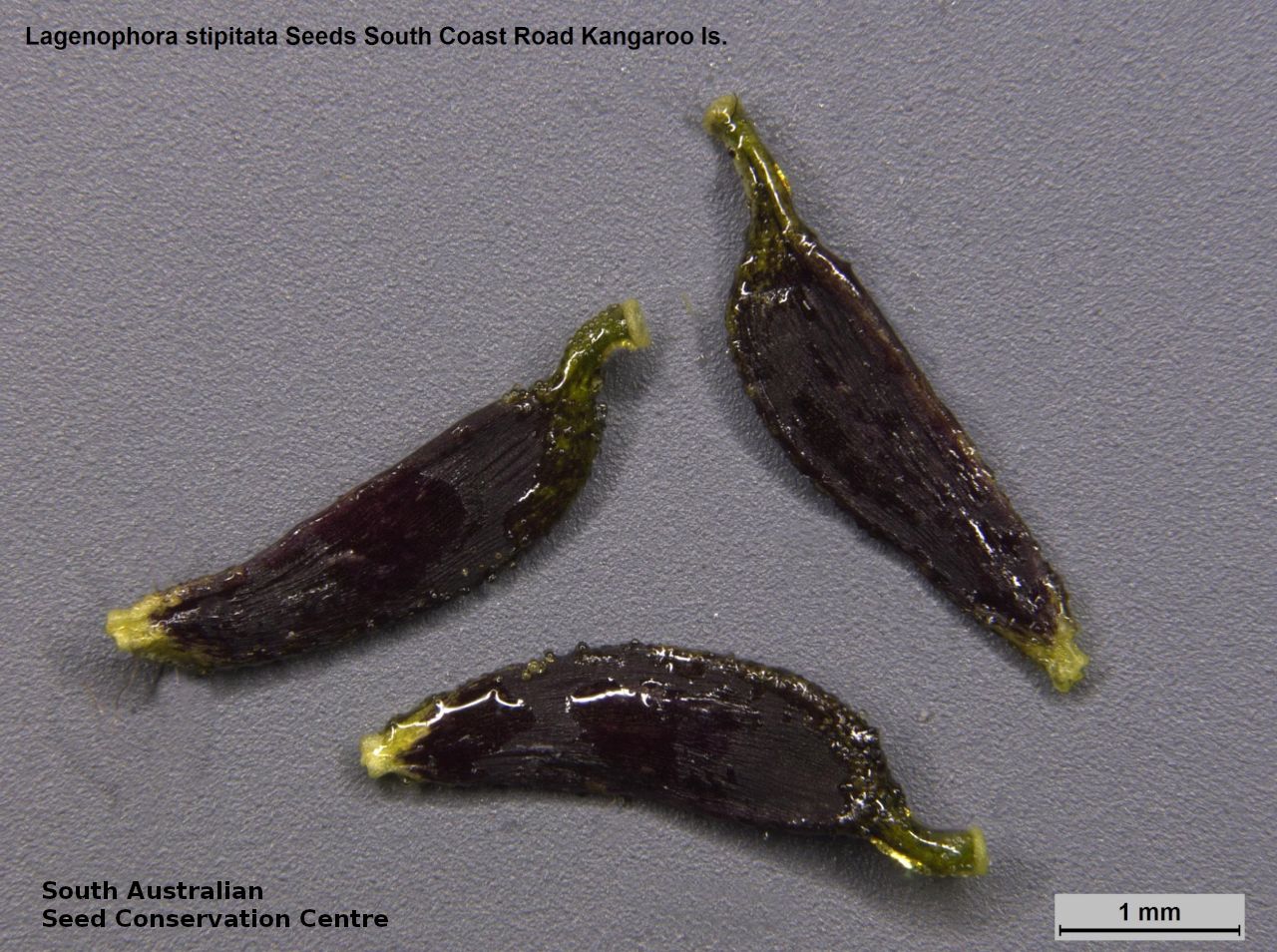
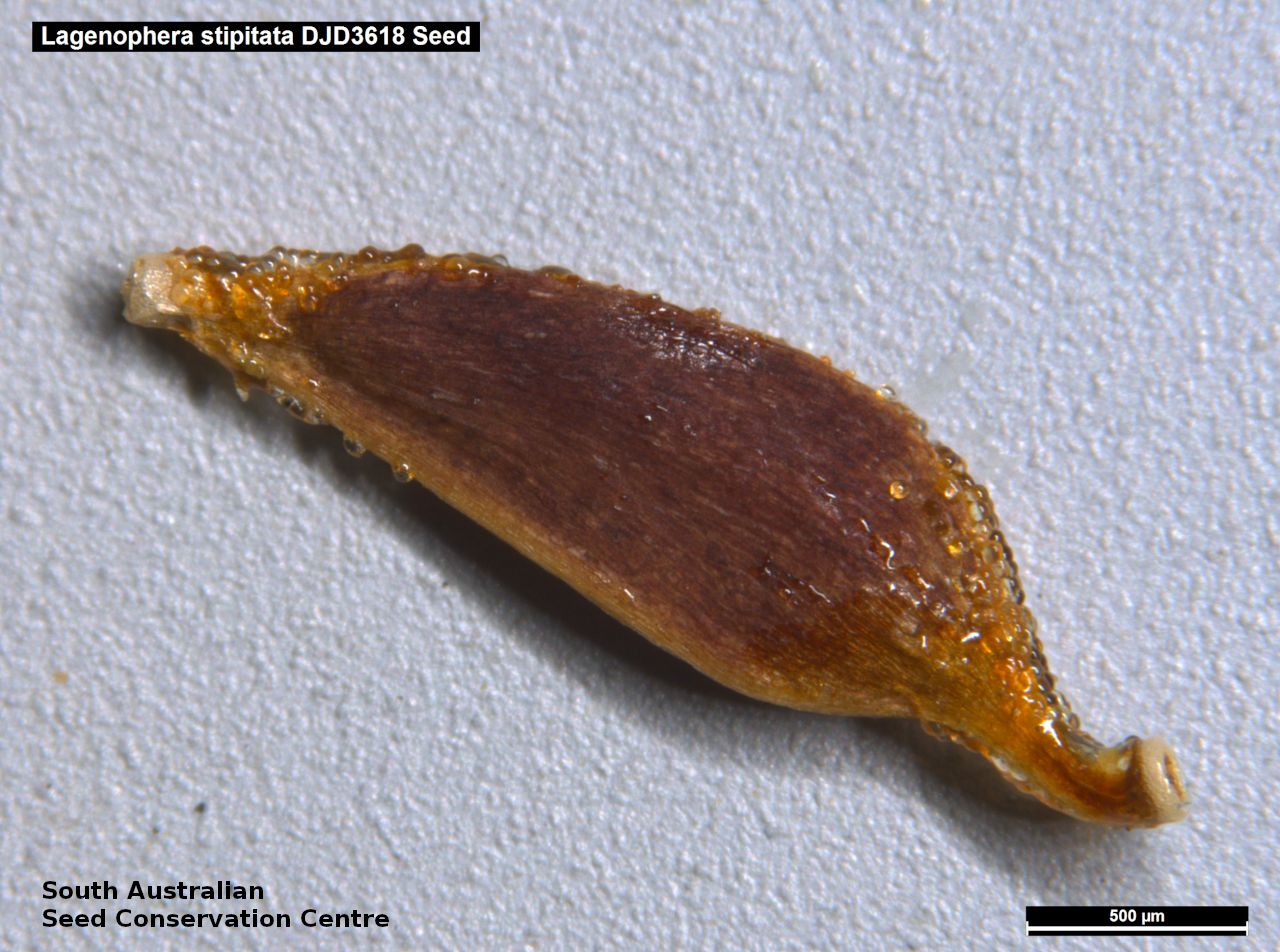
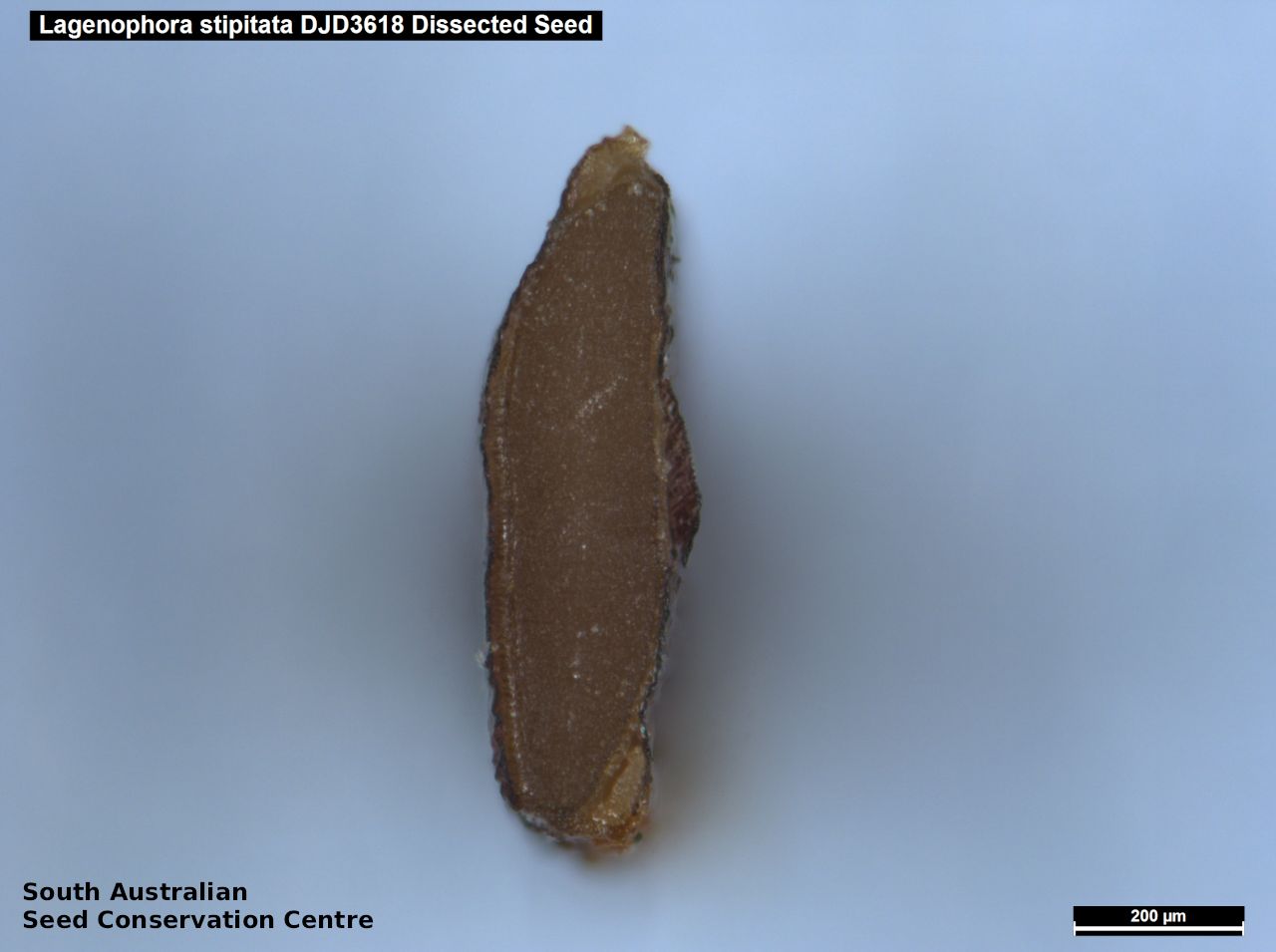

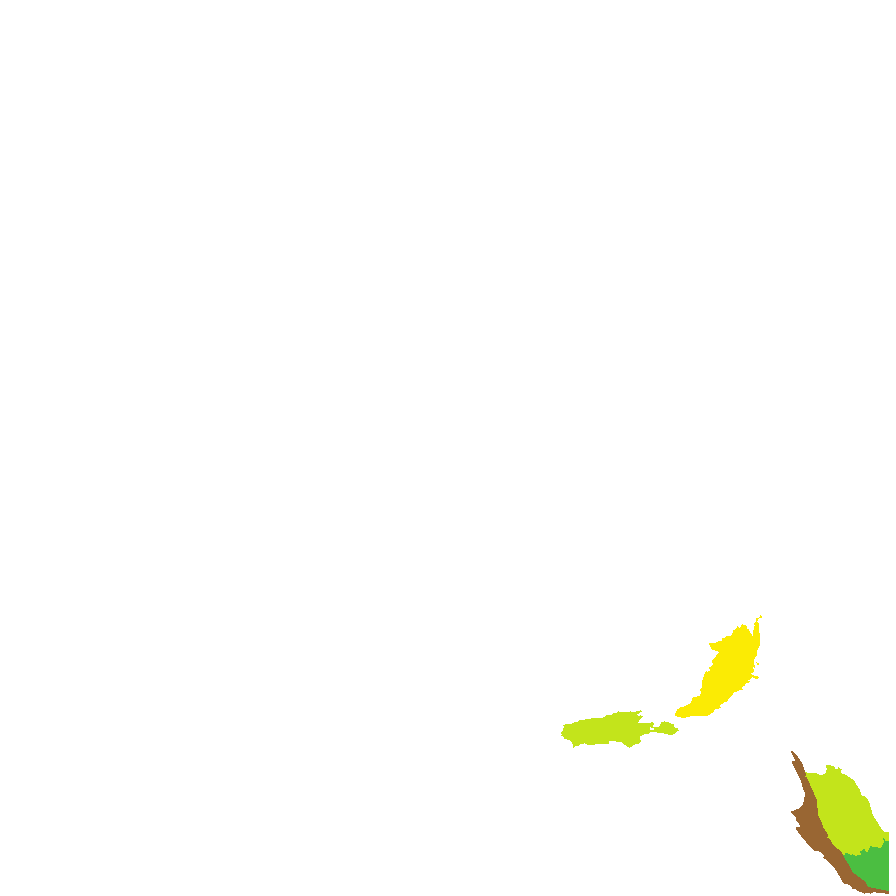
Botanical art
Prior names
Bellis stipitata
Lagenifera billardieri
Lagenifera stipitata var. stipitata
Common names
Blue Bottle-daisy
Spreading Bottle-daisy
Etymology
Lagenophora, from the Greek 'lagenos', meaning flask and 'phorus', suffix meaning carries, possibly referring to the urn-shaped cypsela. Stipitata, from the Latin 'stipatatus,' meaning stalked, alluding to the more robust flower stalk.
Distribution and status
Found on Kangaroo island, southern Mount Lofty Ranges and lower South-east in South Australia, growing in moist gullies and near water. Also found in Queensland, New South Wales, Victoria and Tasmania. Native. Common in South Australia. Common in the other States.
Herbarium regions: Southern Lofty, Kangaroo Island, South Eastern, Green Adelaide
NRM regions: Adelaide and Mount Lofty Ranges, Kangaroo Island, South East
AVH map: SA distribution map (external link)
Plant description
Herb with rhizome forming widely spreading stolons and fibrous roots. Leaves obovate to spathulate, to 60 mm long and 15 mm wide; deeply or shallowly dentate with 2-4 pairs of sinuate or acute teeth; hairy. Flower-heads terminal, solitary on a robust stalk, with white to blue or violet daisy flower. Flowering between October and February. Fruits are brown head with exposed seeds. Seed embryo type is spathulate.
Seed collection and propagation
Collect seeds between December and April. Pick heads that are maturing; drying off, with exposed brown seeds. Mature seeds should come-off easily. Place the heads in a tray and leave to dry for a week. Then gently rub the heads by hand to dislodge the seeds. Use a sieve to separate the unwanted material. Store the seeds with a desiccant such as dried silica beads or dry rice, in an air tight container in a cool and dry place.
| Location | No. of seeds (weight grams) | Number of plants | Date collected | Collection number Collection location | Date stored | % Viability | Storage temperature |
|---|---|---|---|---|---|---|---|
| MSB | 2,780 (4.73 g) | 200+ | 5-Dec-2006 | TST126 South Eastern | |||
| BGA | 5,000 (1.13 g) | 50+ | 9-Feb-2017 | DJD3618 Southern Lofty | 1-Nov-2017 | 95% | -18°C |
Number of plants: This is the number of plants from which the seeds were collected.
Collection location: The Herbarium of South Australia's region name.
% Viability: Percentage of filled healthy seeds determined by a cut test or x-ray.